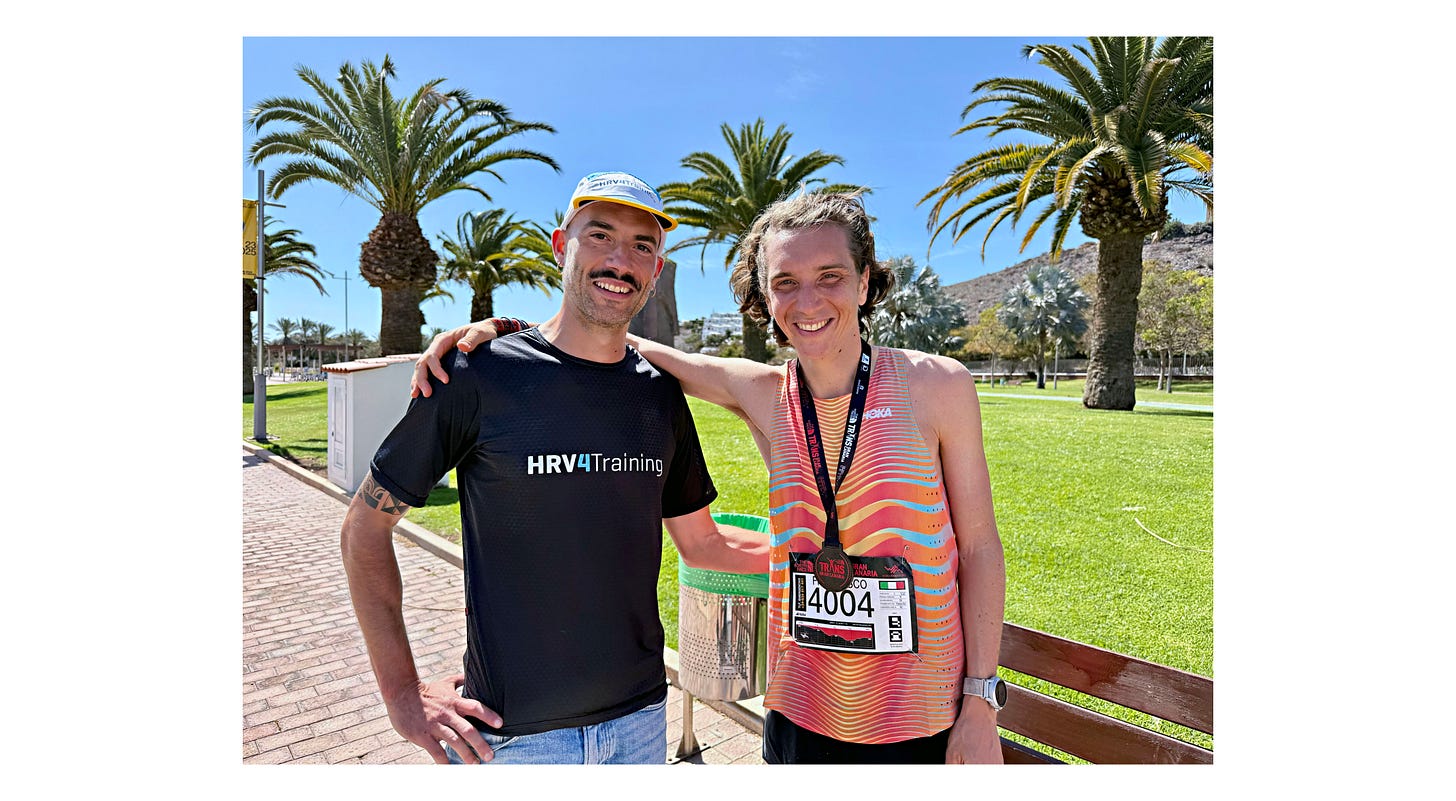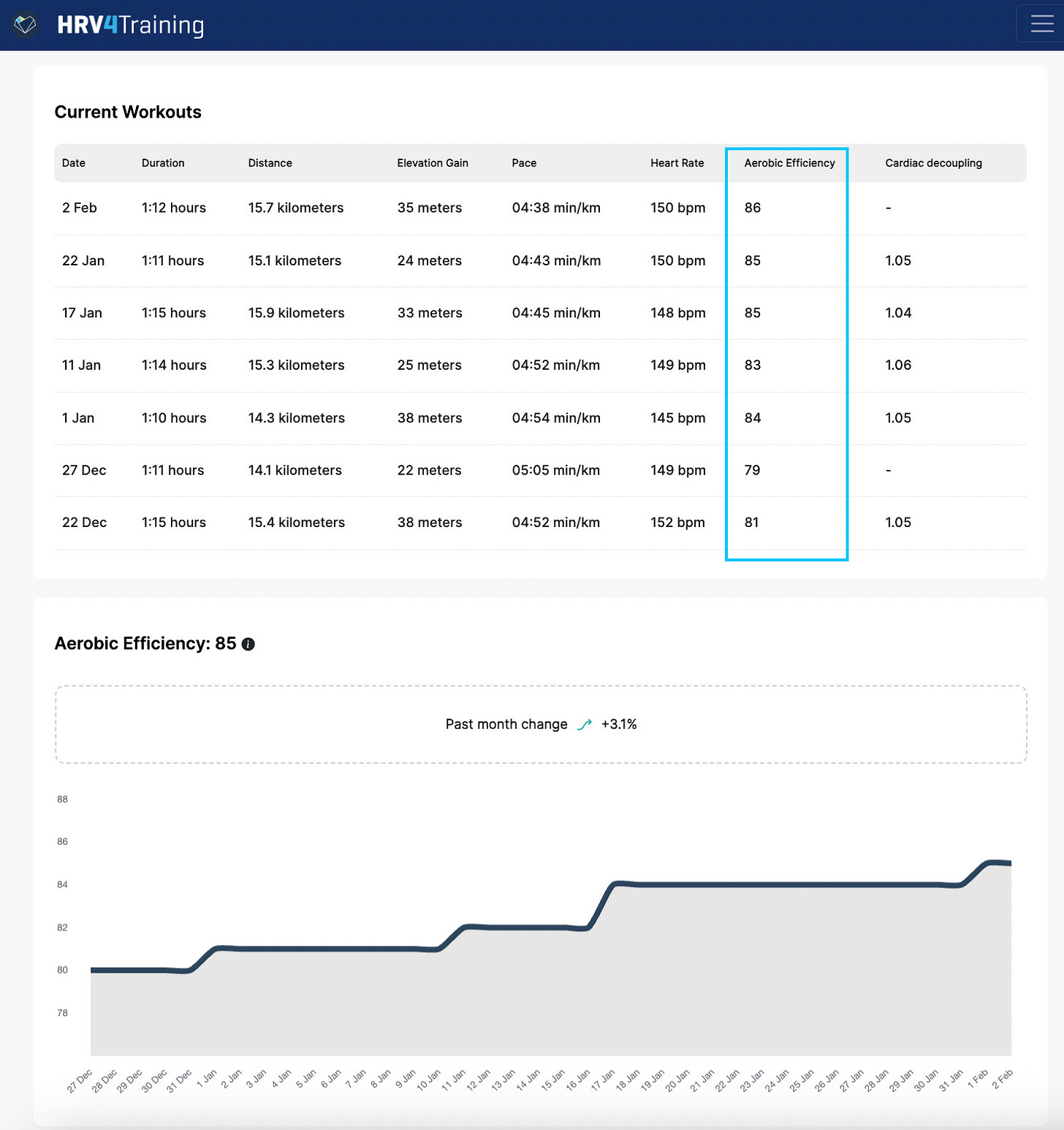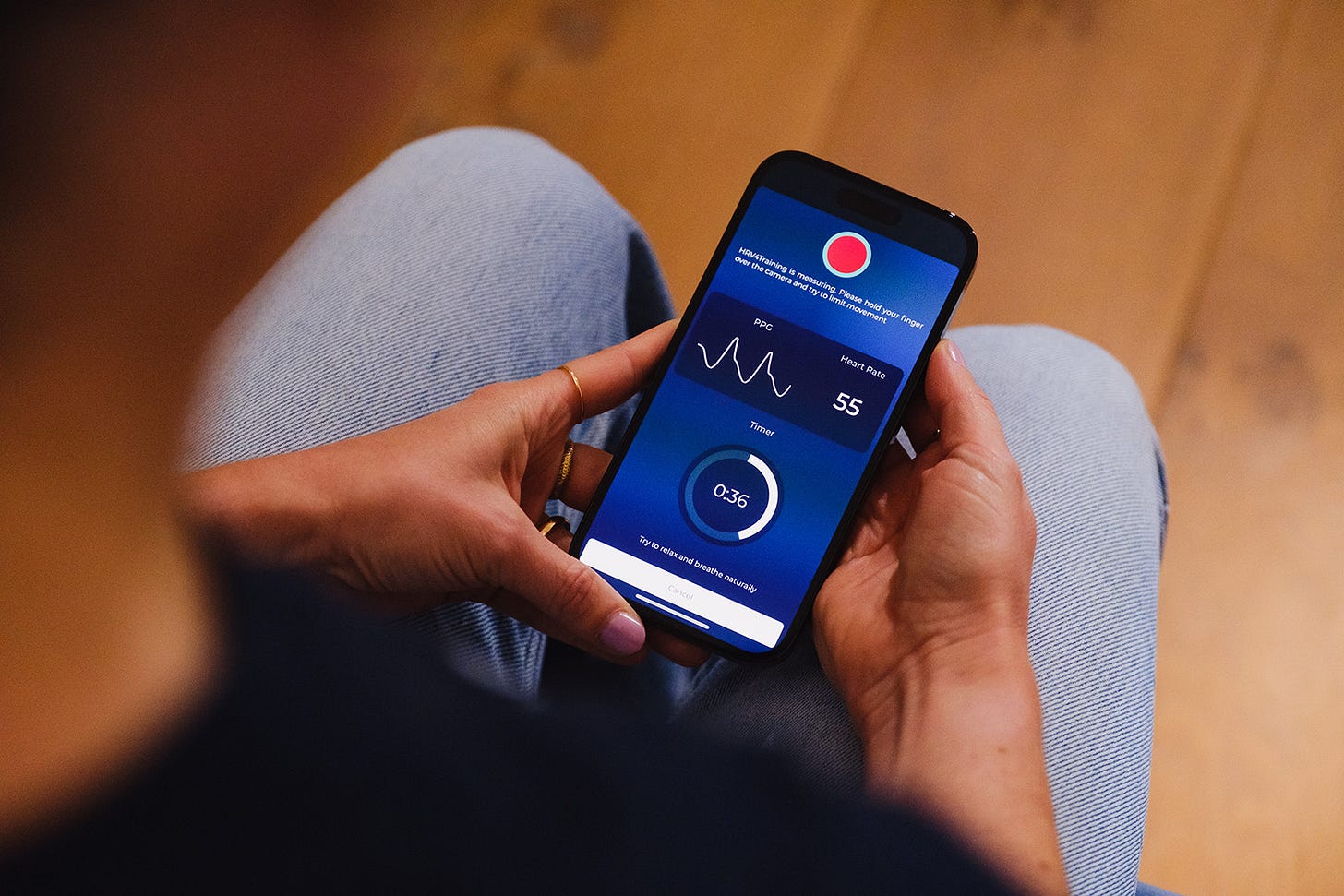Recent articles and updates [February 2025]
Heart rate variability (HRV), wearables, entrepreneurship, endurance coaching, training talk and some ramblings
hi there 👋
I hope all is well.
This month I’m writing to you a bit earlier as I will be traveling back to Amsterdam in the next few days, to finally test my fat oxidation after about ten weeks of dietary changes. Excited to see how that goes, but that’s a story for a few weeks from now!

In today’s monthly recap, you will find articles covering HRV Biofeedback, exercise intensity assessment using pre and post-training HRV measurements, recent research, an improved aerobic efficiency analysis in HRV4Training Pro, and more.
I hope you’ll find the articles useful and I would like to take the opportunity to thank you for your support.
Please feel free to comment below or in the articles should you have any questions, and I will follow up soon.
Take care!
Heart rate variability (HRV) 🫀
HRV Biofeedback and Athletic Performance. Recently, two new studies highlighted the effectiveness of HRV biofeedback, and in particular resonant frequency breathing, in increasing acutely HRV. In the words of Sylvain Laborde, one of the leading experts in the field (with whom I am also writing the “HRV book” 👀), “Slow-paced breathing is the most acceptable, scalable, and cost-effective intervention for enhancing HRV”. In this blog, I provide an overview of HRV Biofeedback, including the underlying physiological principles, protocols, and expected physiological, psychological, and performance outcomes.

Why Should We Not Use Slow Breathing During a Morning Measurement if it Increases Our HRV? This is a common question, especially when learning about the physiological basis of HRV and/or biofeedback exercises, just covered in the previous blog. Given that slow breathing increases HRV acutely, we might think that’s a good thing to do when measuring our HRV. However, that is not really the case. Learn more, here.
One of my favorite applications of HRV analysis is exercise intensity assessment with pre and post-exercise measurements. With this analysis, we can try to answer the following questions: Is our easy training really easy? At what intensity does a workout require a much longer recovery time? does it need to be hard? What about just a bit harder than the first lactate threshold? And what about duration? At what point an easy run becomes harder to recover from, in terms of duration? Learn more, here.
Research 📝
Recent Articles from the World of HRV. While there seems to be a constant chase for novelty, you have to appreciate when data and results are consistently replicated across the board. In this blog I discuss recent HRV papers that provide additional evidence on the following: HRV is more sensitive than heart rate to detect stress. Training intensity determines the degree of HRV suppression. 1-minute measurements are as reliable as 5-minute ones. HRV measurements taken with PPG are reliable both when lying down and sitting. HRV in absolute terms is not a good discriminator of athletic ability. HRV data collected during the day with wearables and optical sensors is of poor quality. Learn more about these studies, here.

Podcasts 🎙️
Principles of Performance Podcast. A few weeks ago I had a conversation about HRV and training with Eric and Mike at the Principles of Performance Podcast, where we cover the basics of HRV and how we can use it in a training context. You can find the video, here.
How to use HRV to quantify stress, balance training and lifestyle and improve performance - with Francesco Puppi. I’m sharing this one again as I believe it was one of the most useful HRV & training conversations I had, and finally, last week I had the opportunity to meet Francesco in person at Transgrancanaria (where he took the win for the marathon). As Francesco puts it, "we approach the topic of training embracing its complexity, without giving easy answers, but trying to understand the context and reason behind some choices and patterns that we observe, and how technology can be a great tool to increase our knowledge and awareness". Link here.

Building 🛠️
I’ve added more activities to the Aerobic Efficiency analysis in HRV4Training Pro, to help you keep better track of progress in the short-medium term. In case you are new to this feature, here is how it works: to determine your aerobic efficiency we compute the relation between output (pace) and input (heart rate). Intuitively, a lower heart rate for the same pace, when consistently shown over periods of weeks, translates into better aerobic efficiency. Below is an example in which I have filtered zone 2 efforts, as I ran the same route once per week for several weeks while rebuilding with my training. You can try this analysis for your own data in HRV4Training Pro.

Training Talk 🏃🏻♂️🚴
I’m working on a blog post where I’ll cover the results of my periodized nutrition experiment, modulating carb intake to improve fat oxidation and endurance performance (discussed here). In the new blog, I’m covering: an overview of periodized nutrition and “fueling for the work required” approaches as well as key “training low” strategies, lab data from my experiment, performance outcomes, my stress response, and all the practical details (sample diet on different days, macronutrient distribution, and more - see a little preview here). In the meantime, below is a diagram I put together as an overview of the approach I am using, inspired by work published by Jeffrey Rothschild, Andrew Kilding, and Dan Plews. More details coming soon!
Training log. As the name states, this is just my new training diary for 2025.
Ramblings and Rants 🤌
The case for simplicity in a world of overhyped wearables. Also: a mini-rant.
Cold exposure increases HRV. However, is the change in HRV reflecting an actual change in recovery and an increase in parasympathetic activity, or is it just a physiological artifact? Some thoughts, here.
Caloric deficit and shifting to a lower-carb diet. Here is some interesting resting physiology data.
Beware, the tools you use show your level of competence. On morning vs night HRV data.

That’s a wrap for this month. Thank you for reading!
How to Show Your Support
No paywalls here. All my content is and will remain free.
As a HRV4Training user, the best way to help is to sign up for HRV4Training Pro.
Thank you for supporting my work.
Recent Updates:
Marco holds a PhD cum laude in applied machine learning, a M.Sc. cum laude in computer science engineering, and a M.Sc. cum laude in human movement sciences and high-performance coaching.
He has published more than 50 papers and patents at the intersection between physiology, health, technology, and human performance.
He is co-founder of HRV4Training, advisor at Oura, guest lecturer at VU Amsterdam, and editor for IEEE Pervasive Computing Magazine. He loves running.
Social:








Diagram "Periodized nutrition for endurance performance: very nice and simple decision tree! I guess some might be interested with few more examples what they can then take, on the right hand side. Your experiment teased my curiosity a lot and some self reflection. I think over the last weeks I have had too much CHO for my breakfasts and I'm keen to apply your recommendations. I usually have a "low" to "mid" GI diet as general base, and I have observed on some recent morning runs lower energy, and "blury" mind at the start of the workout which I believe might be linked to sugar levels. My own challenge is that I don't think I can calculate precisely macros and CHO same as you do. I'm wondering on the best approach, for example designing some typical meals, making a single measure and estimations, and then just replicate/eat the same over time? Of course those who might eat things "out of the box" don't have this problem but at home we buy products from local producers and farmers and we cook everything ourselves ;-) We use very few industrial products. Thanks Marco in advance for your feedback.
I enjoy the reading. Thanks! (https://thegentlelaw.substack.com/p)